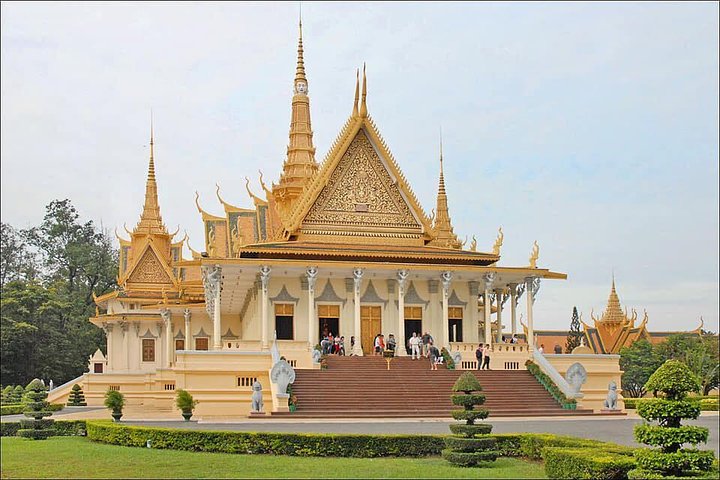Unveiling Phnom Penh: A Journey Through Time and History
Eager to uncover the vibrant history of Cambodia’s capital, I embarked on a tour of Phnom Penh’s most iconic sites. From the grandeur of the Royal Palace to the sobering halls of Tuol Sleng, this journey offered a profound glimpse into the city’s past.
Discovering Phnom Penh’s Rich History
As a digital nomad with a penchant for exploring Southeast Asia on a budget, I often find myself drawn to the vibrant cultures and histories of the places I visit. Phnom Penh, the bustling capital of Cambodia, was no exception. I had heard about the Phnom Penh History Tour and knew it was a must-do on my itinerary. The promise of delving into the city’s past, guided by an expert, was too enticing to pass up.
The tour began with a convenient hotel pick-up, a blessing for a solo traveler like me who often navigates new cities on foot or by public transport. Our first stop was the Royal Palace, a stunning architectural marvel that dates back to the late 19th century. As we wandered through the palace grounds, our guide shared fascinating stories about the royal family’s history and the significance of the palace’s location at the confluence of the Tonle Sap and Mekong Rivers. The intricate details of the Silver Pagoda, with its Emerald-Crystal Buddha, left me in awe and eager to learn more about Cambodia’s rich cultural tapestry.
A Sobering Visit to Tuol Sleng
No visit to Phnom Penh would be complete without acknowledging its darker history. The Tuol Sleng Genocide Museum, once a high school turned interrogation center, stands as a stark reminder of the atrocities committed during the Khmer Rouge regime. Walking through the former classrooms, now filled with haunting photographs and personal stories of the victims, was a deeply moving experience. It was a sobering reminder of the resilience of the Cambodian people and the importance of remembering the past to build a better future.
Our guide handled this part of the tour with great sensitivity, providing context and answering our questions with care. It was a heavy but necessary part of understanding Phnom Penh’s history, and I left with a renewed appreciation for the strength and spirit of the Cambodian people.
Finding Peace at Wat Phnom
After the emotional visit to Tuol Sleng, our tour concluded at Wat Phnom, a serene Buddhist temple that offers a peaceful respite from the city’s hustle and bustle. The temple, perched atop a small hill, is a symbol of Phnom Penh’s identity and a testament to its enduring cultural heritage. As I climbed the steps to the pagoda, I couldn’t help but reflect on the journey I had taken through the city’s history.
The view from the top was breathtaking, offering a panoramic glimpse of Phnom Penh’s skyline. It was the perfect spot to end the tour, allowing me to soak in the beauty and complexity of a city that has seen so much change over the years. As I made my way back down, I felt a deep sense of gratitude for the opportunity to explore Phnom Penh’s past and present, and for the chance to share this experience with fellow travelers who, like me, are always seeking the stories that make each destination unique.















































